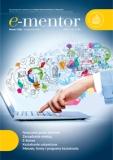
We kindly inform you that, as long as the subject affiliation of our 300.000+ articles is in progress, you might get unsufficient or no results on your third level or second level search. In this case, please broaden your search criteria.



This article presents the estimates of effective tax rates on investment at corporate level in Republic of Macedonia in the period from 2006 to 2012. In addition to accomplishing this research, 3 basic and most commonly applied indicators of the corporate income tax (CIT) burden will be used. They are the cost of capital, the effective marginal tax rate (EMTR) and the effective average tax rate (EATR), according to the Devereux-Griffith methodology. The results of the analysis will clearly show that the implemented domestic tax policy reform have transformed this country into one of the most, if not the most tax favorable country for investment in Europe.
More...
This paper provides a descriptive analysis of the innovation and business strategies of Canadian textile firms. The results show that the textile industry is in a state of decline due mainly to competitive pressures resulting from economic and regulatory changes. The results also show that while the industry recognizes the need for innovation, the current strategies and practices do not seem to be aligned to their strategic goals of fostering innovation.
More...
Quality of work life (QWL) is important for job performance, job satisfaction, labour turnover, labour management relation and such other factors which play important part in determining the overall well-being of any industrial organization. Quality of work life is concerned about the impact of work on people as well as on organization effectiveness. An attempt has been made in this article to analyze the relationship between job satisfaction and quality of work life in service sector.
More...


Autism is a developmental disorder constituting a serious social and economic problem. Early diagnosis and starting appropriate therapy increase the chance to a child's development and thus to avoid social exclusion. Because of the difficulty in access to proper institutions and a long time from the first indications to the diagnosis, the children are being diagnosed later than they should be. Subjective, usually observational, diagnostic criteria are an additional difficulty, because the diagnosis result depend on the experience and insight of the doctor making the diagnosis. The aim of this work is to analyze the possibility of technological support of diagnosis and the evaluation of therapy progress of autistic children, especially using mobile devices. There are some solutions used in this field across the world, but most of them are experimental studies applied in few institutions. The presented study includes a questionnaire survey conducted among Polish institutions working with people with autism. The gathered answers lead to interesting conclusions. Countless institutions use mobile devices in the diagnosis. Most therapists think such support is possible. Moreover, all of them are interested in a system enabling an automatic evaluation of therapy progress for autistic children. Supporting the diagnosis process and the evaluation of therapy progress may increase the chance for independent life of autistic children, and thus decrease the social and economic costs of autism.
More...
The work of contemporary academics has become measurable, and its effects are expressed in the number of citations and points for academic papers. 'Publish or die' is the sine qua non for survival in the current academic reality. Scientific publications in international journals from the so-called 'Philadelphia List', well known in the relevant subjects, give the greatest benefits. Therefore, it is necessary for researchers to improve their skills concerning the writing and publishing of articles in international journals.
More...
This article is about e-learning based on learning by watching videos in the Internet. At the beginning, the author briefly explains the role of public television in the education of the viewers, which is defined in the Act on Radio and Television in 1992. The next section describes the educational programs which were (before 89') and which are (after 89') available on public television. After that, the author has focused on approximate educational opportunities that result from the ability to create videos and to publish them on the web. The article presents some examples of channels available on the Internet on the YouTube: Head Squeeze, Polimaty, Edudutv, Eksperymenty Domowe. In the article's conclusion, the author briefly indicates the advantages of learning through videos published on the web.
More...
The aim of this study was to examine the level of creativity among trainers of soft skills. Creativity is one of the key competence in the profession of trainers. 80 participants response on the Polish adaptation of Test for Creative Thinking - Drawing Production, (TCT-DP) by Klaus K. Urban & Hans G. Jellen. This study shows that psychological education and graduation of professional school for trainers coexist with high score in creativity. Gender is not related with the score in the creativity test. They also confirm results of few prior metanalisys which reveal the lack of differences in creativity between genders. These studies are an important factor in the discussion about the relevance of creating the qualification framework in the profession of trainers.
More...
The aim of the following article is to present the issues of the planned legal regulation of a new, specific category of the participant of payment services market - third-party payment service provider. This is a “third” entity in relation to the user of basic payment service (namely, payer and receiver) as well as to the provider of the payment services - an account-holding institution. Introduction of this term into European Union legislation is one of the most significant changes in the project of a new Payment Services Directive (PSD II). Particularly important in this context is the need for exact definition of legal status of the third-party payment service providers as well as precise determination of the boundaries of their responsibility. Emerging of such entities improves the process of payment and intensifies the competition between banks. Yet, it also cause some problems related to the privacy protection or forgery prevention. The consequences of the before mentioned regulation for providers and users of payment services have been discussed in the present article.
More...
The article presents the issues related to knowledge management by using the integrated management information systems. The aim of the article is to develop the manner of cognitive agent's perceptual memory implementation. The agents run in the prototype of integrated management information system, named CIMIS, which is used in knowledge management process in business organizations. CIMIS is based on the LIDA cognitive agent architecture. The paper draws attention to the business processes integration with the use of the information systems. Using such research methods as literature study, case study and computer simulation, the authors present how to use a topic map standard for perceptual memory implementation. This is very important module of agent's architecture responsible for proper recognition of an object, categories, activities and events occurring both in external and internal agent's environment. The solution presented in this paper allows for automatic interpretation, by an agent, of the phenomena occurring in the enterprise's environment. It has a positive impact on the process of knowledge management. Since the topic map is an international standard, it allows to achieve an interoperability of different information systems.
More...
The presented article covers the topic of gift economy in Internet communities, as a new, fascinating field of research. It shows that gift economy and open collaboration communities' organization of work may be perceived as a new paradigm of reciprocal exchange. It describes the phenomena of gift economy and open collaboration in economics, and, specifically, management science. It also proposes that this area is worth a particular attention of researchers, especially coming from the new generations of scholars.
More...
The article presents the results of the fifth edition of the study focused on the economic maturity and awareness of children and youth. The study has been based - like in case of previous editions - on an anonymous survey. The respondents were the students of primary schools and lower secondary schools who take part in out-of-school economic education - the students of Children's University of Economics (EUD) and The Academy of Young Economist (AME). For the first time, also the students of lower secondary school who do not participate in such out-of-school education have been invited to complete the survey.
More...
The article presents the original process perspective on organizations in terms of their approach to knowledge management and use of intellectual capital. The purpose of this article is to propose solutions to the problems of large organizations resulting from too much heaviness in adapting to changing customer requirements. The article analyzes the effects of enlargement on the traditional business process management in accordance with the concept of dynamic BPM, such as better use of intellectual capital, a radical increase of flexibility, continuous development of the knowledge that can be used in practice as well as the continuous sharing of knowledge. Using IT tools and technologies such as BPM, ACM, Process Mining and Social BPM for practical implementation of dynamic BPM, organizations achieve a significant improvement of the efficiency of current operations and the ability to build a sustainable competitive advantage. The article emphasizes the fact that the basis of the concept and success of dynamic BPM is not IT technology. IT systems can facilitate the work, but they cannot provide creativity nor flexibility of the work. The basis is to enable the operation of the whole intellectual capital of the company, working and sharing of knowledge in the implementation of the process for the clients.
More...
The NMC (New Media Consortium) Horizon Report in 2014 listed 3D printing as a technology that is two to three years from widespread adoption. In this report, 3D printing was also classified as a disruptive technology especially for the manufacturing sector. A review of the current literature ranging from journal publications to news reports of how 3D printing technologies are changing the way teachers teach and students learn is the focus of this report. 3D printing technologies include 3D printers, 3D scanners and the recently introduced 3Doodler pen. The widespread rise in popularity of 3D printing technologies is directly correlated with their availability at a lower cost in the consumer market. 3D printing technologies are causing educators to refocus attention from the digital or virtual environment to the real world, where 3D printed objects can be touched and felt. The stl (stereolithography) file is the common file type used for 3D printing and although CAD (computer-aided design) software is the ideal software for making stl files, there are other software choices for producing CAD-free stl files like PhotoToMesh and 123D Catch. How 3D printing technologies are currently being used across the curriculum by teachers as well as students demonstrates the increasing interest in and success with its usage in the learning environment. The growing interest in making and using 3D printed tactile learning objects by the blind or visually impaired points to a future where image-intensive courses and textbooks will have available 3D prints when touch is the primary method for learning. 3D printing and related technologies appear poised to become even more significant as it becomes clearer from the work of early adopters how best these technologies can be employed for teaching and learning.
More...
On-line debate is one of many proposals of using new technologies in educational process. Due to it's form, it allows to implement different educational aims. In the assumptions adopted by the authors, on-line debate is understood mainly as sharing different perspectives on analyzed phenomena and processes. The article presents the possibilities of using international on-line debate as educational project in teaching process on the level of higher education. The authors presented both theoretical and practical premises of an effective use of this form of teaching. The attention was drawn to the possibility of using this form of education in relation to the National Qualifications Framework for higher education. Exemplified by the project 'The bridge across the Atlantic', the possibilities of using on-line debate in the process of developing broadly defined students' competencies were presented. Particular attention was paid to the possibility of using on-line debate to develop information literacy, linguistic competencies, intercultural and project management competencies. The article presents experience and conclusions gained in three editions of on-line debate, in which students from Poland, USA and Canada have participated. Also, the stages of preparation, implementation and evaluation of on-line debate in the context of the rules and procedures of project management were indicated.
More...
Economy and knowledge are closely intertwined in the knowledge-based economy. Scientific knowledge as a result of conducted research should significantly react on the market demand. The driving force behind the knowledge-based economy is shaping mutual relations among all the actors involved in the process of its creation. What's more, those actors contribute to the value-added formation. Above all, each side of the partnership should know the reasons why it is built and what benefits could be derived from it. Analyses show that Poland has great scientific potential and fairly good infrastructure. What is needed is the accelerator which could free the inner force. That possibility, not only for scientists but also for entrepreneurs, could be a call for proposals „Tango” which offers wide range of possibilities for commercialization of the results of conducted basic research.
More...